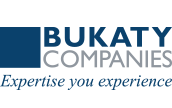Today’s workforce faces a unique set of stressors. While there is no quick fix when it comes to easing the worries of workers, managers and leaders looking to foster employee potential can keep these four pressure triggers in mind when evaluating workforce policies and programs.
Integrating Al
Artificial intelligence’s (Al’s) rise in utilization is a double-edged sword. AI’s capability to automate and offload tasks increases efficiency, but workers unsure of its placement can be uneasy about the long-term impact on job relevance. While Al is useful, its implementation can be used as an opportunity to recalibrate workloads and promote upskilling and reskilling to employees. Consider implementing AI handbook policies that clearly establish the bounds in which AI can and will be used in the workplace.
Lack of managerial support
Lack of managerial support leads to rising levels of stress for employees who feel undervalued or unheard. Managers play a principal role in molding the employee experience. If those in leadership roles cannot adequately identify and address employee issues, employees are likely to become disengaged and feel dismissed or overwhelmed with their workload. Training managers on how to intervene and resolve employee issues is pivotal to supporting worker wellbeing.
Health care costs
Rising premiums, high out-of-pocket costs and a lack of clear insurance comprehension can create uncertainty and dissatisfaction with employer-sponsored health insurance coverage. Ensure you are partnering with an employee benefits team that understands the value of strategic plan design and tailors coverage to your organization’s unique needs. Employers can promote educational materials on cost-transparency tools, HSA-eligible expenses, how to maximize pharmacy coverage, and other topics to equip employees with the tools to be better health care consumers.
Retirement and long-term financial security
Retirement seems out-of-reach to many workers nearing the end of their career. Employees are delaying departure from the workforce due to uncertain financial security. Between increased cost of living and lack of savings, workers of all ages are worrying about long-term financial health. Tuition assistance programs, increased 401(k) contributions, health savings accounts (HSAs), and financial planning classes are attractive benefits that affirm the financial security of employees of all generations.
Pinpointing how to support the welfare of your workforce is the first step to minimizing employee stress. Consult with a Bukaty Companies representative to learn more about tactics to keep your workers happy with comprehensive benefits.


